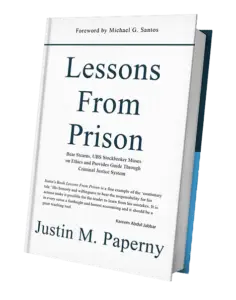If you’re facing a sentencing hearing in federal court, one of the most overlooked—but essential—steps is understanding how the Bureau of Prisons will determine your federal prison desigation.
The designation process isn’t random. And it’s not something to leave to chance. With the right preparation, you can influence it. But if you show up at sentencing with no plan, no supporting documents, and no advocacy—don’t be surprised if you’re federal prison designation doesn’t meet your medical, educational, or program needs.
I’ve seen it too many times, and many shared all the stories on our weekly webinar.
The Bureau of Prisons currently confines over 140,000 people. About 30,000 of those are in minimum-security federal prison camps. The rest are spread across low, medium, high-security prisons, and administrative facilities. My partner Michael Santos served time in almost every type of federal facility during his 26-year term. He learned exactly how the BOP designates people and why it matters. I’ve learned from him and the people our team has guided over the years.
I’m writing this article to help you avoid mistakes others in our community have made—and to give you the tools to prepare before you get designated to the wrong federal prison.
Where The Federal Prison Designation Begins: The DSCC
The Designation and Sentence Computation Center (DSCC), located in Grand Prairie, Texas, is where the Bureau of Prisons decides where you’ll serve your sentence. They review:
- Your judgment and commitment order
- Your Presentence Investigation Report (PSR)
- The Statement of Reasons from the judge
- Any detainers or pending state matters
- A summary report from the U.S. Marshals
You won’t speak to anyone at the DSCC. This process happens behind closed doors, based only on paperwork—most of which you can influence before sentencing.
That’s why we push people in our community to think ahead. You can’t fix a bad PSR or weak sentencing memorandum after designation. You’re stuck with what’s in the record.
How the BOP Scores You
The BOP assigns you a security score, based on factors like:
- Severity of your current offense
- History of violence or escape
- Criminal history
- Whether you voluntarily surrendered
- Educational background
- Detainers or pending charges
- Drug or alcohol abuse
Voluntary surrender is one of the only ways to lower your score. If you qualify, do it. It signals responsibility and makes a camp placement more likely.
DSCC officials also screen for “Public Safety Factors” (PSFs). These can override your score. For example, if your offense involves weapons or you’re a sex offender—even if you score minimum—you might be ineligible for a minimum security camp.
Medical needs are also a factor. The BOP uses a four-level Care system:
- Care Level 1: Healthy, under 70
- Care Level 2: Chronic but stable (e.g., diabetes)
- Care Level 3: Serious illness requiring frequent care
- Care Level 4: 24/7 nursing care required
Only a handful of BOP institutions offer Care Level 3 or 4. If you have serious medical needs, your designation might not be near home.
Distance from Home and the First Step Act
Since the First Step Act passed in 2018, the BOP is supposed to designate you within 500 driving miles of your primary residence—if program and security needs allow it. That’s a goal, not a guarantee.
In practice, I’ve seen people designated close to home, and others sent across the country. Why the difference? Usually it comes down to planning—or the lack of it.
We’ve helped people build records that support placement near home by including personal narratives, release plans, family support letters, medical documentation and program requests.
Understanding the Security Levels
The BOP operates across five main security levels:
- Minimum (Camp): Dorm-style housing, no fences
- Low (FCI): Dorms, more staff supervision
- Medium (FCI): Double fences, locked cells
- High (USP): Maximum security, high staff-to-inmate ratio
- Administrative: Used for medical care, pretrial detention, or special population cases
Most people reading this hope for a federal prison camp designation. According to the BOP’s latest public reports, about 15% of those in custody serve time in federal prison camps. But that number is shrinking, as more people are reclassified due to PSFs or lack of preparation.
What Actually Influences Designation
Your designation is not decided in a vacuum. These are real people at the DSCC, working off limited information. I’ve seen people who assumed they would go to a federal prison camp—but ended up at a low or medium because they never addressed a detainer, didn’t submit documentation, or had a poorly written PSR.
Conversely, I’ve seen people with complicated backgrounds secure federal prison camp placement because they built a clear case for why they didn’t pose a threat.
It’s not about manipulating the system. It’s about telling the full story—before it’s too late.
What You Can Do
If you’ve already been sentenced, your options are more limited. But if you’re in the pre-sentencing phase, this is the window to take control:
- Fix errors in your PSR
- Ensure the Statement of Reasons is accurate
- Request voluntary surrender
- Submit a compelling release plan
- Provide documentation on program needs or medical issues
- Get letters from stakeholders showing support and stability
You’re not just preparing for sentencing—you’re preparing for designation. They’re connected.
Want to Learn More?
Every Tuesday, our team hosts a live webinar that provides in-depth details about the BOP designation process, sentencing preparation, early release strategies, and more. You’ll hear from people who’ve served time, including my partner Michael Santos, and you can ask direct questions.
You don’t have to go through this blind.
See you Tuesday!
Justin Paperny



